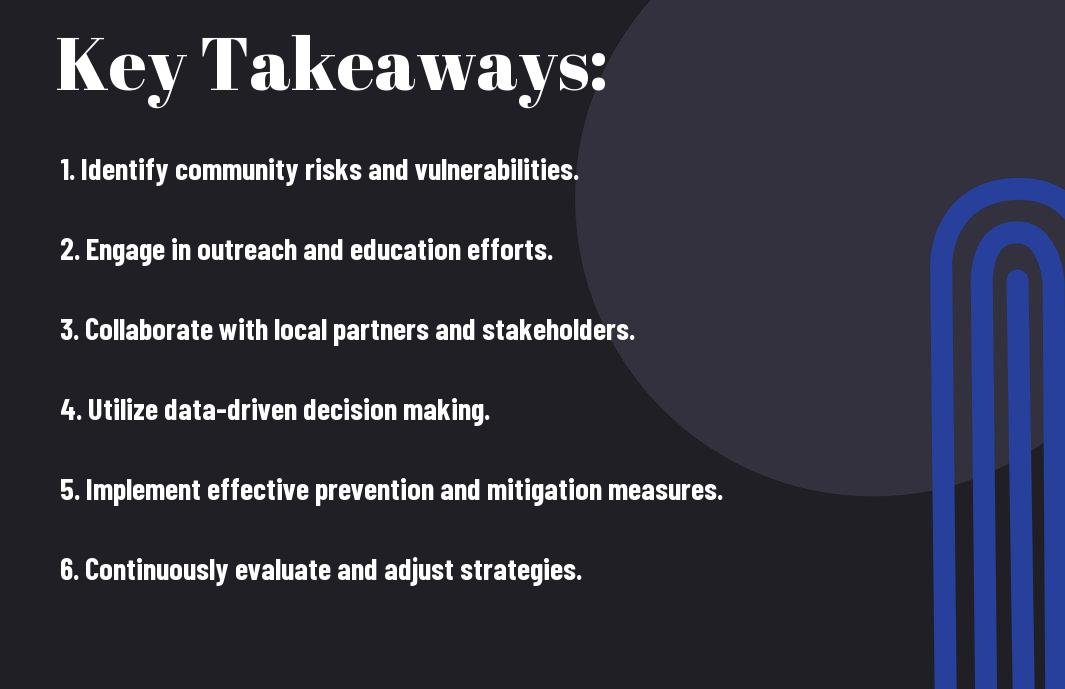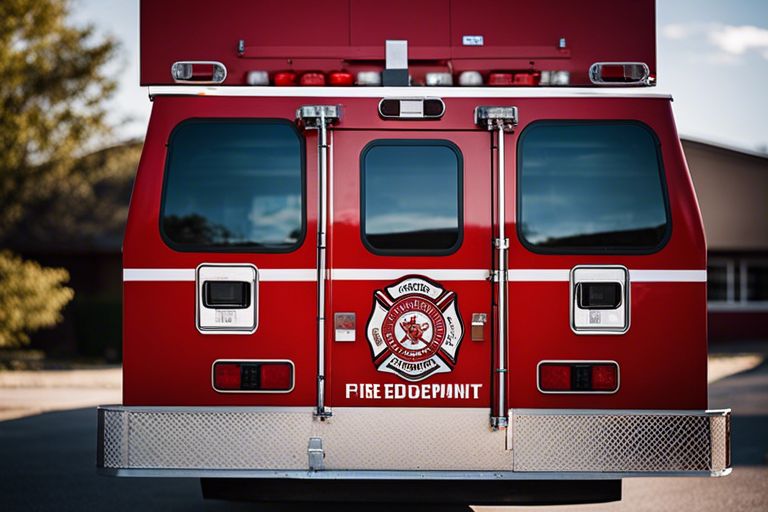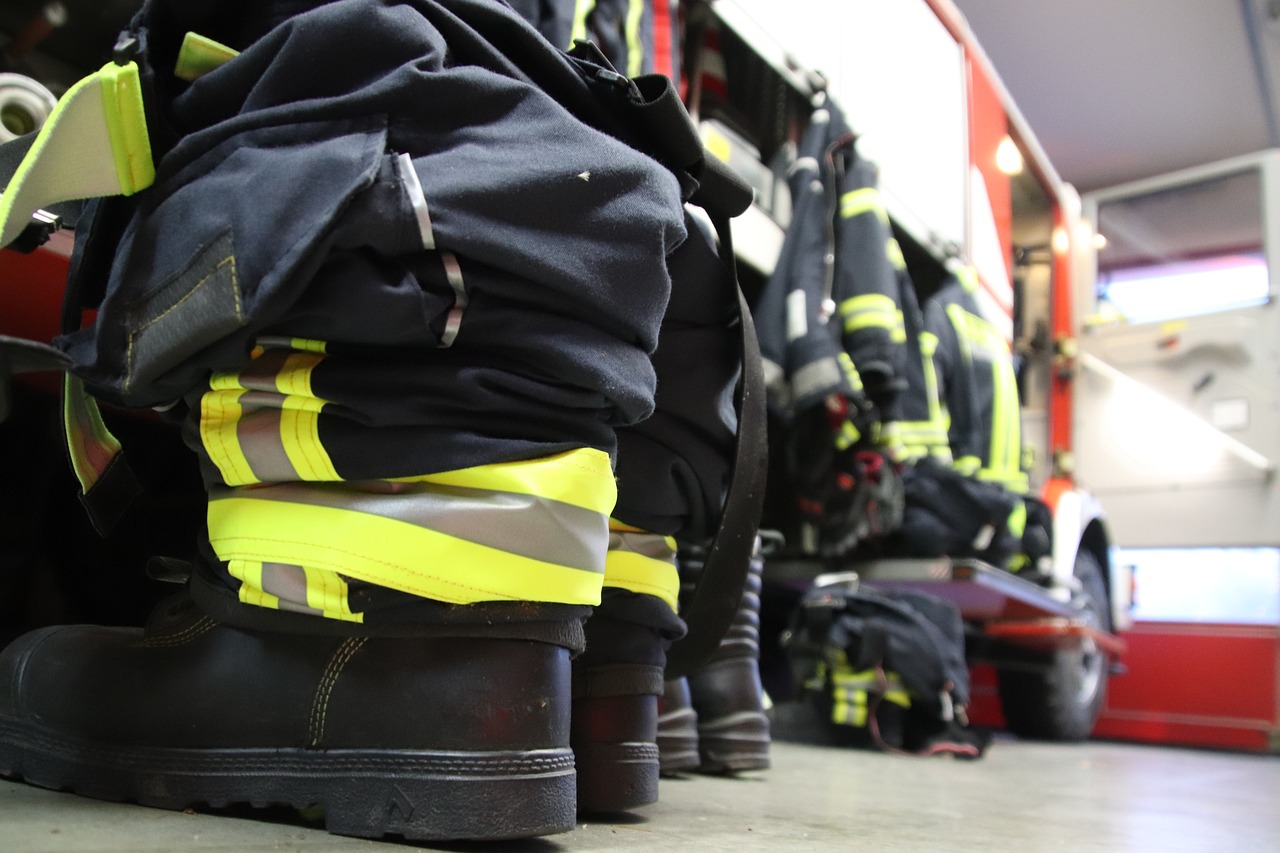Reduction of community risks is vital for your volunteer fire department’s success. By implementing strategic plans and educational programs, you can proactively mitigate potential hazards. This blog post will guide you on effective community risk reduction strategies to protect and serve your neighborhood with efficiency and care.
Identifying Community Risks
For
Assessing Fire Hazards
Identifying potential fire hazards in your community is crucial to developing effective risk reduction strategies. Conduct a thorough assessment of your area to pinpoint areas prone to fires, such as high-risk buildings, industrial sites, or locations with a history of wildfires. By identifying these fire hazards, you can proactively implement measures to mitigate the risks and protect your community.
For
Analyzing Demographic Data
Identifying and analyzing demographic data in your community can provide valuable insights into the population you serve. Look at factors such as age distribution, socioeconomic status, and mobility to understand who is at the highest risk during emergencies. This information can help you tailor your fire prevention and safety programs to effectively reach vulnerable populations and reduce overall community risks.
Fire departments that analyze demographic data can prioritize resources and tailor outreach programs to address the specific needs of different groups within the community. By understanding the demographics of your area, you can better allocate resources and develop targeted education and prevention campaigns to reach those most at risk. This approach enhances community engagement and ensures that your efforts are effective in reducing the overall fire risk.
Developing Risk Reduction Strategies
Little do you know that as a volunteer fire department, you play a crucial role in developing risk reduction strategies to enhance the safety of your community. By proactively addressing potential hazards and implementing preventive measures, you can significantly reduce the likelihood of emergencies and minimize their impact when they occur.
Fire Prevention Education
Risk reduction begins with educating the community about fire prevention measures. By conducting workshops, distributing informational materials, and organizing safety events, you can raise awareness about common fire hazards and the importance of taking preventive actions. Engaging with schools, senior centers, and other community groups can help instill good safety practices and empower individuals to protect themselves and their loved ones.
Smoke Detector Installation Programs
With a smoke detector installation program, you can make a tangible impact on improving fire safety in your community. By offering free or discounted smoke detectors to residents and assisting with proper installation, you can ensure that more homes are equipped with early warning devices. Smoke detectors are proven to save lives by alerting occupants to the presence of smoke and fire, giving them crucial seconds to escape safely.
Detector maintenance, battery replacement, and regular testing are important components of a successful smoke detector installation program. By providing guidance on these practices and offering periodic check-ins or reminders to residents, you can help ensure that their smoke detectors remain in working condition and provide reliable protection against fire.
Emergency Preparedness Planning
Developing an emergency preparedness plan is a critical aspect of community risk reduction. By creating comprehensive response strategies for different types of emergencies, such as fires, natural disasters, or medical incidents, you can minimize chaos and confusion in crisis situations. Involving community stakeholders, developing communication protocols, and conducting drills can help ensure that everyone knows their role and how to respond effectively in an emergency.
Planning for vulnerable populations, such as elderly residents, children, or individuals with disabilities, is important for creating inclusive and effective emergency preparedness plans. By identifying their specific needs and requirements, you can tailor response strategies to ensure that everyone in your community receives the assistance and support they need during emergencies.
Building Partnerships
All Chief Concerns: Community Risk Reduction should start with building partnerships within the community. By collaborating with local government agencies, you can access valuable resources and support to enhance your risk reduction efforts.
Collaborating with Local Government Agencies
Partnerships with local government agencies such as city councils, health departments, and emergency management offices can provide you with access to crucial data, funding opportunities, and specialized expertise. Working hand in hand with these agencies can help you develop more effective community risk reduction strategies that are tailored to the specific needs of your area.
Partnering with Community Organizations
With strategic partnerships with community organizations such as schools, non-profits, and neighborhood associations, you can amplify your impact and reach a broader audience. These organizations often have established networks and resources that can help you implement community risk reduction initiatives more efficiently.
Local businesses play a vital role in the community, and partnering with them can be mutually beneficial. By engaging with local businesses, you can access additional resources, funding, and support for your risk reduction programs. Businesses also benefit from a safer community, which can enhance their reputation and operations.
Engaging with Local Businesses
A strong partnership with local businesses can lead to innovative solutions for addressing community risks. Building relationships with businesses in your area can also increase awareness about fire safety and prevention measures among employees and customers. By involving local businesses in your risk reduction efforts, you create a network of support that can help you achieve your goals more effectively.
Implementing Risk Reduction Initiatives
Conducting Fire Safety Inspections
Now, with the goal of reducing community risk, conducting regular fire safety inspections in residential and commercial buildings is crucial. As a volunteer firefighter, you can partner with your local fire department to schedule these inspections. Identifying potential fire hazards and ensuring compliance with safety regulations will significantly reduce the risk of fire incidents.
Providing Fire Extinguisher Training
Fire extinguisher training is crucial for effective risk reduction in the community. You can organize workshops to educate residents on how to properly use fire extinguishers in case of emergency. This hands-on training equips individuals with the skills and confidence to respond promptly to small fires, preventing them from escalating.
Initiatives such as providing fire extinguisher training empower community members to take action in emergency situations, contributing to overall safety and risk reduction efforts.
Organizing Community Events
Community events focused on fire safety awareness are effective in engaging and educating residents. You can organize open houses, safety fairs, or workshops to raise awareness about fire prevention strategies and emergency preparedness. These events create a platform for interaction between firefighters and the community, fostering a proactive approach to risk reduction.
Safety-focused community events not only educate residents about fire prevention but also strengthen the bond between the volunteer fire department and the community, leading to a more resilient and safety-conscious neighborhood.
Overcoming Challenges
Many challenges are inherent in running a volunteer fire department, from limited resources to volunteer retention and resistance to change. According to the Volunteer Fire Service Culture: Essential Strategies for Success, addressing these challenges requires strategic planning and proactive approaches.
Managing Limited Resources
To effectively manage limited resources in your volunteer fire department, it’s imperative to prioritize tasks and allocate resources wisely. **Identifying** key areas where resources are most needed and **developing** partnerships with local businesses, community organizations, and government agencies can help **maximize** the impact of your department’s available resources.
Addressing Volunteer Retention
On the topic of volunteer retention, **creating** a positive and supportive **environment**, **acknowledging** and **rewarding** volunteers for their contributions, and **providing** ongoing training and development opportunities can help **increase** retention rates. **Encouraging** open communication and **actively** seeking feedback from volunteers can **also** **help** address any issues **promptly** and **effectively**.
With **commitment** and **effort**, **you** can **implement** strategies to **improve** volunteer retention **rates** within your department and **build** a dedicated and reliable **team** of volunteers. **Remember**, **your** volunteers are **imperative** to the success of **your** department, and **investing** in their **well-being** and **development** is **key** to **maintaining** a strong **volunteer base**.
Dealing with Resistance to Change
An **important** aspect of effectively managing a volunteer fire department is dealing with **resistance** to **change**. **Recognizing** that **change** is **inevitable** and **communicating** the **reasons** and **benefits** of **proposed** changes **clearly** and **openly** can **help** **mitigate** **resistance**. **Engaging** **volunteer** **input** and **involving** them in the **decision-making** process can **also** **encourage** **acceptance** of **change** and **help** **foster** a culture of **adaptability** within the department.
For instance, **implementing** **regular** **trainings** and **workshops** focused on **change** **management** and **leadership** **development** can **help** **prepare** volunteers to **embrace** **change** and **navigate** **challenges** effectively. **By** **instilling** a **culture** of **openness** and **flexibility**, **you** can **overcome** **resistance** to **change** and **drive** **positive** **transformation** within **your** department.
Evaluating Program Effectiveness
Tracking Key Performance Indicators
Your volunteer fire department’s Community Risk Reduction program success can be measured by tracking key performance indicators (KPIs). One critical KPI to monitor is the number of community members reached through educational outreach programs. Additionally, keeping tabs on the percentage of homes inspected for fire hazards can give you insights into the program’s effectiveness in reducing risks.
Conducting Regular Program Assessments
Assessments of your Community Risk Reduction program should be conducted regularly to ensure its efficacy in enhancing community safety. These assessments involve a comprehensive review of the program objectives, strategies, and outcomes. Using indicators like the number of reported fire incidents before and after implementing the program can help you gauge its impact accurately.
Regular assessments also provide an opportunity to identify any areas for improvement in your Community Risk Reduction initiatives. By analyzing data trends and community feedback, you can make informed decisions to enhance the program and better address community needs.
Gathering Community Feedback
Indicators of success for your volunteer fire department’s Community Risk Reduction strategies also include gathering feedback from community members. Conduct surveys, focus groups, or town hall meetings to solicit input on the program’s effectiveness and relevance.
For instance, community feedback may highlight specific challenges or concerns related to fire safety in certain neighborhoods. By actively engaging with residents, you can tailor your Community Risk Reduction efforts to address these unique needs and build stronger partnerships within the community.

Final Words
As a reminder, implementing community risk reduction strategies is crucial for volunteer fire departments to proactively address potential dangers and hazards in their areas. By focusing on prevention and education, you can significantly reduce the risks posed to your community and enhance overall safety for everyone involved. Recall, taking small steps consistently can lead to significant improvements in community safety over time.
Ultimately, by staying proactive and working collaboratively with your community members, you can make a substantial impact on safety and emergency preparedness. Embrace the role of a community risk reducer, and continue to seek out opportunities to educate and engage with your community on best practices for preventing and mitigating risks. Your dedication and efforts can truly make a difference in ensuring a safer and more resilient community for all.



